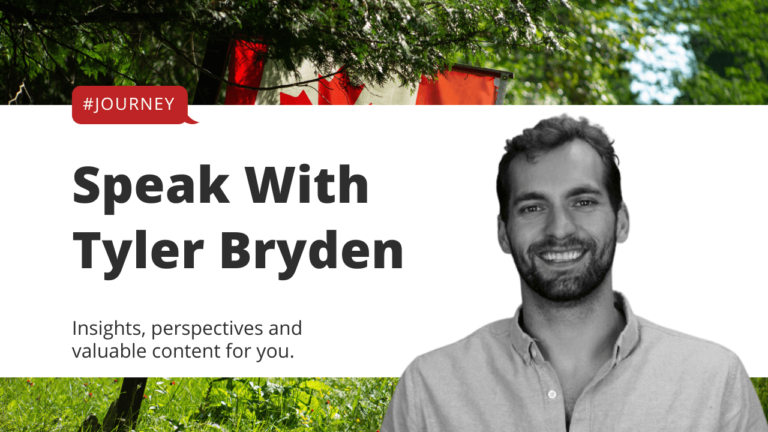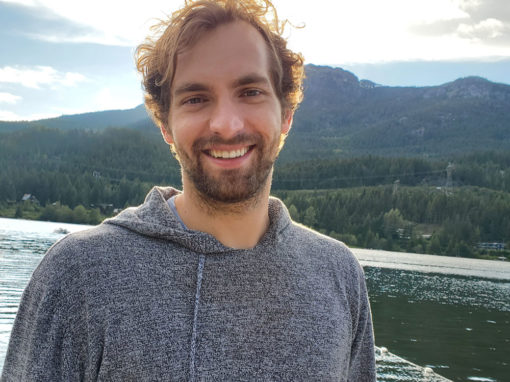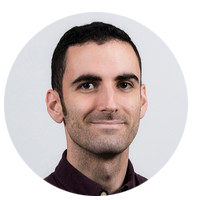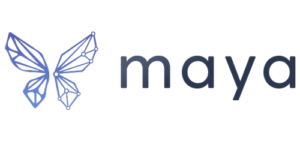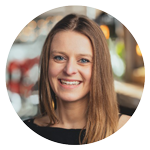Alright hello, it’s Tyler Bryden here. We’re excited be sharing with you today. Something is deeply fascinating. This is hot off the press, which is how to identify commercial intent in language.
An accredited post around this. There’s been a lot of connections made that brought this together very quickly after years of actually sort of navigating through this in different in different ways and marketing and public speaking, communication and just of course this fascination with language an. What I realized and and sort of came across is just this idea of, you know, as as I’ve gone through this content creation strategy and prioritization at the start of 2021, I’ve realized that it’s very important to prioritize the time around the content that you’re creating, and because so much of this is a strategy around organic search engine marketing. So what people are searching for and looking for you then need to prioritize. But the commercial intent of those searches are actually are. So if I was to create all this content all the time,
that would be fantastic. But if those aren’t actually contributing to goals of the organization are not helping me grow, then it could actually be time that’s not spent. Well, so that’s what I’m really honing in on here today, and I’m going to dig through with you. Is how can you actually identify commercial intent in language? And this is, I hope, very exciting. Are you as someone who has done a lot of search engine marketing both on that organic side and then on that paid side I have spent? Hours of my life looking through keywords and and if you’re doing Google ads, you’re paying for keywords and then you’re trying to filter out the ones that are not sort of commercially valuable to you. And really, people are spending tons of money through a system like Google ads and often wasting that money because the keywords just are not going to lead to anywhere
there. There are not, as we’re going to talk about transactional or commercial. Searches with no no intent that is actually going to lead to something, so I’m going to set up the stage a little bit here. I saw that ponytail on Mobius Kitten hair is getting long. And again I got to post here and everything and I really hope you do enjoy this. This was a deeply fascinating for me and has actually tide together years of experience of corporate training and all this stuff into. You know, both what I think individuals,
organizations who are doing marketing and communication are something that they can actually use. And then also that you know something that I’m now tying together with Speak AI the software. So that is a beautiful I guess. Culmination of a lot of things and amazing to see this all. Intersect so quickly I’m going to go through this, which is, you know, how are some? Here are some ways that I guess we can identify commercial intent and just to give you, I guess a little bit of a primer.
One of the main ways that we see is this sort of funnel let people go through as they become aware of a problem. They realize that there’s a solution for that problem may become interested. They start to research, then they come to a decision, and then they actually. Take that action and so I’m not going to go through all the you know, all the fine details on all the all these like little sentence is in here and everything. But it is very fascinating.
This was introduced over 100 years ago and these are these cognitive states stages. I guess that people actually go through and if someone’s made a purchase then they have gone through these stages. And just as an example, this is like a E Commerce sales funnel. The one I would use to make a joke about was like the instant pot and like you know generally you may be here about. You know you hear about this instant pot and then you go when you visit the site, you view the product page.
You add the item to the cart. You enter the checkout process and then you make the final purchase. So that’s the actual action that’s taking place, but throughout that you you know before you actually got there you were making this. You know these you’re taking these steps to actually get to that, and that’s what this awareness, interest, desire an action sort of funnel really indicates an ADA for short. So there’s different. You know, different stages that people in them are very different,
and then a lot of this actually informs organizations and individuals content strategy because they write different pieces of content. Different types of content, or use different strategies in this stage for a lot of people, using Facebook, and like display ads. With high impressions and high reach in this stage just to see if there are people out there that they can make aware of. You know the product or or service or solution that they’re actually offering and hopefully you know. Reaching as many people, finding some people that actually generates interest, and then they come through to that next stage which.
Make sense interest agent so they are aware of the need solution exist and they want to look at you know what those solutions are. So at this time there are like often you know on search engines they’re starting to look at different different brands. Competitors versus search is really starting to do some research on what is the actual solution. The other example I would often use and this would be like back pain. You know you’ve got a sore back.
You’re starting to be like I think I you know I need a solution to this. So now I’m starting to search for those solutions, is it? You know, do I need a chair during a massage? Therapist physio what what all that is so? This is this very research intensive stage and then starting to compare what those solutions are both for. I guess practicality and then cost and Accessibility. All of these things that really you know are are indicators or attributes to actually leading down deeper into this funnel which that next stage. Here is the desire stage and I guess just Lastly on that interest.
This is where you know what happens in advertising funnels as they. Hit you with an awareness. If you engage with it then you’ll start to see the next stage of that funnel pop up. More content is created and they’re sort of doing this retargeting funnel. Trying to get you down through these stages, so hopefully this helps you.
Actually, maybe a little bit more resistant or just cognizant of what’s actually happening on the advertising perspective. But now that you are through the interest you are into this desire stage so you know that there’s a solution there you want it. You have this desire to get a specific product or services solution. They are not necessarily. We haven’t made the action yet, but they’re getting closer in the searches. Their behavior is actually reflecting that,
so they might be very committed to finding a solution that they might just not be committed to you. So this is what they talk. A very crucial stage in in the actual advertising sort of process that you really need to drill down during this and hopefully push people over the line to actually make that final transaction the purchase, which is. The last stage makes so much sense action stage. These people are finishing the transactions in our customers.
They you know you’re sending them the goods and this is happening. You know, in local stores, maybe sadly not right now as much because of Pandemic, but online through E Commerce. So this is actually when you put the credit card and you make the purchase you are in that action stage. The part that you know I’m not going to touch on too much today is that now you become a customer. What is happening now is a lot of focus on the next part, really. Evangelizing someone, once they make a purchase, then it’s about bringing them back over and over again, and really increasing the lifetime value of a customer from not just one purchase but to something that happens over and over again,
and then hopefully actually turns into a referral. Now this is where I actually get into the language part, which is really interesting. So if you put all that together, we’ve got this funnel that people go through and then based on those stages and where you are in this, your search is the language that you’re using becomes very different and I am looking through this lens of search engine market today. But as I look in deeper into commercial intent, this can be, you know, in normal writing and emails and tweets and social media. There’s these indicators of commercial intent, and primarily I’m looking through the lens of language today, but right now I am pretty focused on sort of search engine marketing, both paid and then organic, so commercial intent. What is often broke, broken down into is like informational,
search, intent, navigational and then transactional or commercial intent. And there are some people break it down into more nuanced stages, but I think this is pretty, you know, pretty overarching. That’s the right word for this in how we can actually explain this so you know an informational one is very, you know, there’s a lot of these searches online people looking for this looking for information, but doesn’t necessarily mean. There are going to become a purchaser, and this is again more aligned with that awareness stage and people spend a lot of time creating content and spending money advertising. But you don’t necessarily know if these people are going to convert to a purchase. There’s a lot of work to actually make that happen, and there can be people loss throughout that pretty easily,
specially with competitors and so many options online. But you can start to see know. Here’s some informational keywords and they intend to include some words like how to best ways. Ways to I need to very informational looking for information and generally what we see and I’ll talk about this a little bit. Is Google keyword planner and ubersuggest like when you look at if people are searching for this a lot more people searching but it but the cost is is lower and so is the competition.
And generally that’s because a lot of the focus is actually put on these searches in these terms that are further down. At Ada funnel more towards the the actual action part, so just something to see if you’re looking for new keywords advertised on it. You could see some amazing opportunities. Wow, ton of people searching for this and it’s not even you know that much competition. It’s most likely because they’re too high up in that information and it might not be valuable. However, if you have a great funnel,
you have a great strategy. It could be very worth it to educate people and this is what Hubspot’s done so well in this idea of inbound marketing. And when you educate, you can actually bring people through. That funnel very nicely. So lots of things to think about there.
But you know, I hope that you can just see from a couple of examples what these actual searches look like. There are some. The one stage that I don’t have in this right now is sort of this like research stage, which I would say is like a little bit in between, which is like. Compet like comparison so. I know if it was speak AI versus Otter AI, or you know Microsoft versus Amazon or like these are starting to be more research and comparisons and you can start to see that as moving a little bit more towards commercial intent as well too, especially if you’re winning that competitive battle.
If you’re not, maybe that’s the opposite. If you realize people are finding a competitor who may be better than you, that could be, you know. Actually meaning that you’re maybe losing on that commercial intent, but something to think about that there is a sort of research stage that’s actually part of this as well. And then there’s the navigational search intent. So this is where queries are looking, so navigational means that they’re actually looking for a specific brand or company or organization.
So I have here Amazon or Walmart. They’re actually typing that in, so it becomes this very navigational. So the query and then, like you know, mindstate and process that people are in. So this for these organisations is fantastic. It means that they do have definitely moving towards commercial intent. And what’s really interesting will see in Google ads if you type in specific Google ads then you will like for you know say you type an just again that’s
in my head right now it’s right here in Microsoft you’ll see Amazon advertising on that because that navigational search intent is. Indicated that their interest in probably purchasing something from Microsoft, Amazon has competing services and they know that if they can maybe educate and sort of intercept the person in that moment that they might be out, babe. Maybe I’ll actually be able to steal that. You know, that lead that perspective? Customer perspective sale. I’m sorry bout that language there really sorry I keep going.
Keep going to finish this up. I’m going to hopefully be able to speak and then the final stage of this is what we’re actually trying to identify today, which is what are these transactional or commercial intent searches these queries? Or what is this language that indicates commercial intent or transactional intent? So I have a. Listen, I’m going to show you in a second, but this is a couple quick ones that were actually looking at here that indicate it. So by discount deal, shipping quote estimate and what’s fascinating is that these keywords have a lot of times lower. Search volume is not meant is not. Not as many people are searching for them, and you know at that final purchase stage,
but the competition. Is much higher so you know companies are aware of these these terms that are showing commercial intent, and so there’s a lot of companies fighting for this space and I can talk about this again at another point, but like ad systems are just an auction and everyone’s competing for this space in this exact moment and hoping that their timing it right. So if you’re doing Google search, of course you’re aiming for high commercial intent. You’re paying for that click, and you’re hoping that you’re going to get a return on investment for it. So when you start to see by order or get quote order online. There’s a lot of companies who are vying for that space, and then that space becomes worth a lot more,
so the competition can be very high now. There are some tools. I know we gotta go tools that actually allow you to do this now. I took us a couple screenshots. I had to be a chicken show Marshall, Google keyword planner, but I’ll show ubersuggest but I did a search.
You know around buying by guitar and I’m playing guitar right now so this is deep in my mind. I saw a couple searches I’m thinking about now, but allows you to find those searches. So this is a way that you can identify commercial intent so you can find in this you can look at the language, actually, the keyword that you’re looking at, or you can actually. Look at again this idea of what. How high is the competition, how much it may cost, or what you see. Lower searches,
higher competition and then higher costs. Most likely that is because there’s commercial intent. Those are valuable keywords in searches and that is a very good indicator for you that there is commercial intent there. However, we actually want to look at the language today. I’m going to show a couple of ways to do that and then Uber suggest I did the same thing here so I have a little search for guitar over.
Suggests great tool. I’ve brought this up. Or with Neil Patel, you can see you know guitar for sale. You can see the cost per click and then they’ve got some terms. I don’t know where the SD is here, but basically pay difficulty and then search difficulty as well too. So you can start to see as the cost per click go up. You know as we see new near me which is a search term near me is hugely commercial term for searches and you can see that man,
it’s actually reflected in the price. So if we look I wonder can I filter here? Yes, yes yes I can. So even by looking at this we can start to see you know there are some good volume around it, but you can start to see that the higher cost these are interesting couple of them are, I guess proving me a little bit wrong. I will say that but yeah, see guitar repair near me. It’s like some of these things that are higher up are showing that there is commercial intent and I’m looking at both that cost per click looking at the volume, looking at the difficulty here both on a paid on a paid competition and then also in SEO.
Competition as well, but what I actually want to drill down again. Just a reminder for myself and for you is that there’s big indicators of this actually within language as well too. And then. What have I got my tongue stuck out, I’m sorry. You know that Google suggest is a great tool.
Google Keyword Planner is a great tool and will give you a lot of insights into this. Now. What’s really interesting is what I had mentioned earlier. Is that doing this manually is a ton of work. I have set it. I have a Oh my God, did I lose my drawings?
Have a drawing somewhere that was drawing today. Now this won’t look much much like anything to you. I’m going to do. I switch this over now.
Switch it. I got a second here. I’m sorry that you have to see this. This is this is raw, just told you it was fresh off the press, but you spend time basically walk through this. You take you take you take that what I just showed you those Google keywords.
Keyword planner ubersuggest. Just brainstorming and think about it and then say you want to do an advertising campaign. Construction searches differently, but then you drop it in as basically a seed list of keywords that you want to advertise on. Alternatively, you could actually be building content around and then what you’re doing is you’re paying for them. You’re starting to see searches come through. That are not commercially viable. There wasted money that people you know,
it’s just a waste of money. And then what you’re actually doing is in Google Adwords you’re creating a negative keyword list. So now you’re creating a negative keyword list and you’re dropping terms in there that are now coming through that you’ve been paying for that you don’t think are valuable, and as you do that as you add to the negative keyword list no longer will you actually have to pay for those terms so very quickly if you optimize this, right? You can actually avoid wasting a lot of money and then only focus your ad spend on commercially viable terms with commercial intent with transactional intent that are actually leading to conversions on your site goals on your site. So one of the parts that I’m trying to figure out here and again, very sorry for that is. How can you do this more automatically? ’cause it does, it takes,
you know, very manual. I’ve spent again our hours looking through terms mean like this is not valuable. This is this weather data. Click, click, click click and there’s some automations and stuff that you can do but not necessarily through language. It’s more for you. I’m spending too much short-term on this term and it’s not making me any money. And So what I’m trying to figure out is actually how can we do this automatically?
And now this is selfish time. Do not selfishness is I hope I’m sorry for the swearing that you might have just saw. I’m doing commercial to know I am in the way a little bit. Let me let me drag prosek. Oh well, nothing more fun on the estimate so I built commercial intent into speak now.
So I’ve got custom categories and now that list and I’ve included this in the in the actual post as well to below where I just wasn’t this. It will now be able to automatically identify all language that then indicates this commercial intent, so this is really cool. I don’t know if I have any other ones, but like literally a sorry again about the swearing hit the edit, pop it in, save and now automatically it’s going to scan and analyze all those actual terms. So I apologize for any custom categories that you just saw that were naughty that is part of life. I’m going to hop back into my space here. Yeah, so I’m back in the left side and what I did I didn’t show you in Google keyword planner,
but I did a sample on the guitar again and it came up with like 1200 words. So that was you know that was a lot like I have to look through all these and of course we can do some sorting and figure it out but what I wanted to do was speed it up and So what I actually did was then exported all of those terms. And you can see them all here. If I scroll 3000 words and now with the analysis with speak it’s automatic. All the terms that with commercial intent are then automatically identified so I can hit, you know, for sale I can hit cheap and it’s going to take me and then I can see all the ones with near me beautiful like Now I have stripped through thousands and thousands of words and automatically identified the terms that actually have commercial intent an I could just keep building this.
I could print negatives in and then. You know, remove seeing ones that I don’t just I hope this works. Live demo is always scary, but just so you can see will probably take a second. Just to go through and and analyze it all.
Come on my friend. You got it. Yeah, all that was right and Oh my God sorry I was in the way I was in the way again. I’m sorry I’ll do this one more time. Just live so that you actually see you know I’ve got cheap here we are not for sale boom near me I’m just like I love hopping through this price right and now you’re quickly jumping through all the commercial intent within again thousands and thousands of words this could take. Hours to identify if you Oh my God so I moved a little too far. I gotta get my little scroller guy over here and I know those people in Excel where you know doing,
filtering and amazing stuff. But this is you know, deeply fascinating, and I’m hoping you know you can see the actual potential. My dream is that one day you know as much as you know. I love advertising it like is like what you know. How could you do this whole thing automatically and then you know first of all identify keywords and language with commercial intent. And then if you’re spending money on advertising automatically, you know, for example, turn take negative words that are not with no commercial intent, put them as a negative search term, and first of all, avoid spending wasteful money right in the beginning or as things come through that as you’re sort of exploring new search terms and keywords to automatically
filter out the ones that are not valuable to you. 22 minutes would you do it? I’ve got a full list here for the, you know, some of the other ones that I’m putting in that into the category. I’m going to keep building this. Gotta couple examples of less commercial searches, but to give you some good ideas and maybe these become very commercial terms. We do things that have been surprising to me that they’ve they’ve worked. You know, someone search this and then they go and submit a contact form or buy something or get a quote that I’m like that was weird that they actually
did that, but. You have to do your own exploring. However, there’s been a lot of work, a lot of research, and a lot of likes, wasted ad spend to figure out commercial intent in language. Wow, OK. When I hop back into my webcam here, I think I’m good. This was a ton of fun.
I hope that you enjoy seeing this a little bit and it’s also see like the use case. The value of it. I really believe if you do this right could save you so much time and prioritizing what content to make. Prioritizing paid advertising and you know, even flipping this around of analyzing any language anywhere in emails and everything so starting to look at other things like persuasiveness and then more to bring me back to love and. Healing and growth. One of the things I’m interested in not to derail this is like how can I help identify myself when I’m in, you know, danger you know at the Press of mood, or you know, how can we help identify when someone is actually in crisis? This ability to use custom categories, insights, phrases and keywords to automatically extract and then help you navigate through large amounts of information in language really has so many capabilities and hope this is just one
of them. That you see. And again, this was how to identify commercial intent in language. Do you have anything else to say, Dollar? No, I think that’s it. Thank you so much. I hope you did enjoy this. If you have any questions about this,
please feel encouraged to reach out. I love this stuff and I’m pretty excited and hyped up about it. I’m going to be spending a little bit more time not just on that again. The commercial intent, but transactional informational building out these categories and automatically analyzing it. If you have any. Ideas,
recommendations, thoughts? Just let me know. Send me a message and thank you so much again as always for checking this out, I love you. You deserve great things and I hope to see you again. I update you hoping it see you again. I hope that you listen to this.
Hope you’re enjoying all this stuff. I will be continuing this journey and I wish you all the best on yours. Thank you.
